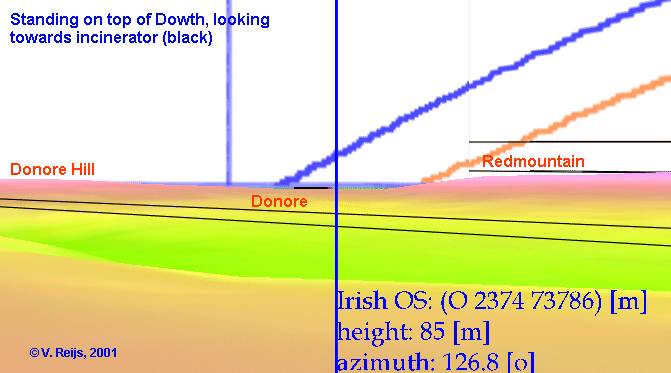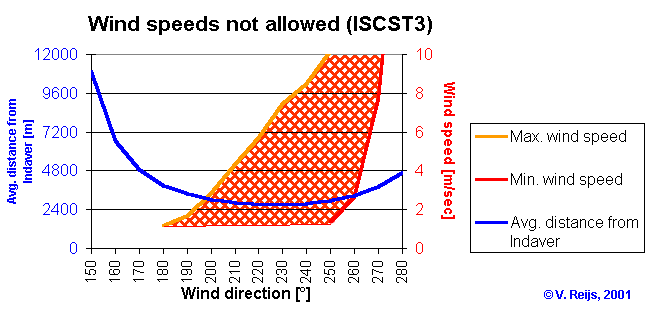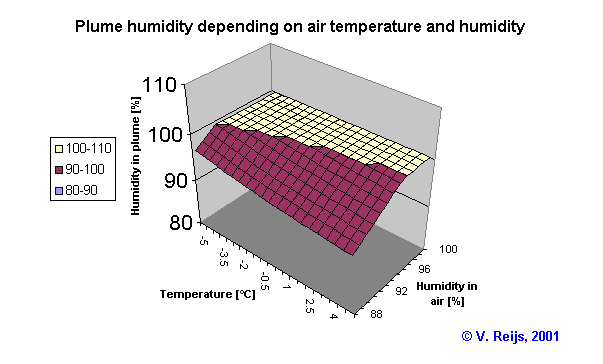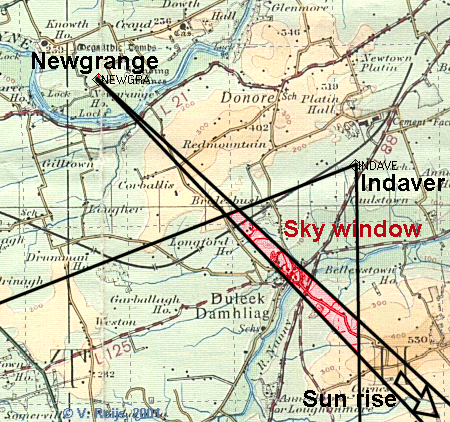 Home
Home Up
Up Search
Search Mail
Mail
NEW
Light rights in the Boyne Valley
In the Netherlands, wind mills have the rights to get wind,
thus
no buildings are allowed to be build that can obstruct the wind flow.
Being
a Dutchman, that stimulated my thought for megalithic buildings to have
the rights to receive the sun/moon (celestial) light. Why don't these
megalithic
building have Light rights!!! This ideas has evolved and is now
a major consideration against the planned incinerator Indaver, near the
Boyne Valley.
Introduction
To start this page; I keep on finding it strange that I need to provide
arguments not to
build the incinerator Indaver (see also my
letter to Meath Country Council, my
observations
to An Bord Pleanála and press
release)!
I have the following observations:
- I am concerned about the possibility that the planned incinerator
Indaver near the Boyne Valley is able to stimulate the formation of
clouds and thus obstructing the sunlight coming inside Newgrange.
I am working on this and it is covered in the next
sections.
- The Boyne Valley is a World
Heritage site. Indaver is some 3 km for this area. This in itself
should
be enough to protect it against possible negative results of an
incinerator.
I have asked UNESCO for feedback on this issue.
Dúchas has mentioned this already in their
reaction towards Meath County Council on July 23rd,
2001:
"... in relation to the visual impact of the 40m chimney stack.
We would ask that its potential visual impact on the Boyne Valley area
site included in the UNESCO World Heritage list, be taken into
consideration
in the decision on weather or not planning should be granted for this
development."
If we look at the location of the World Heritage Site and the location
of the the planned incinerator, one could see the following picture:

The zones around Brú na Bóinne World Heritage Site
The following divisions are depicted:
- Red: Core Area
Only modest extensions allowed by Meath County Council, as describe
in section 4.11.2 of Draft management plan: Brú na Bóinne
World Heritage Site, Dec. 2001. - Blue:
Buffer zone
Only small scale development allowed by Meath County Council, as
describe
in section 4.11.2 of Draft management plan: Brú na Bóinne
World Heritage Site, Dec. 2001. - Green:
Guarding zone
Only medium scale development allowed as proposed by me. Large-scale
developments (like EPA is defining an incinerator) seems not correct.
This
extra zone also provides a proper gradual change in the designation of
areas, which is support by Meath County Council.
- Indaver can be seen from the top of Dowth, as
shown in a 3D/VRML world.

This picture should be comparable to the picture
in
the Environmental Impact Statement Attachments, View 22 of Indaver
Ireland,
Oct. 2000. It is not, the above shows the 40 m high chimney, while View
22 does not show this.
If one does not belief a computer model;-), here a different view:
- The outlet of the chimney is at least 75 m above sea
level (40
m
high chimney and 35 m ground level)
- The top of Dowth is at 15 m above the door sill of the
adjoining church
(O'Kelly [1993])
- The church door sill is at min. 60 m, so the top is at least at
75 m
above sea level
- The maximum height of the valley between Redmountain and Donore
Hill is 70
m above sea level, so this valley is not obstructing the
sight
line between the two locations (even
taking
into account terrestrial refraction and the curvature of the earth)!!!
In the rest of this page I will determine a few issues specific to
cloud
formation around an incinerator, because this incinerator (Indaver) is
planned near the Boyne Valley.
Cloud formation around Indaver and Boyne Valley
The following issues need to be studied to determine if clouds will
block
the sun within the Newgrange chamber:
Weather at Boyne Valley
I assume that the weather distribution experienced at Dublin Airport
can
be used for the weather at the Boyne Valley. Furthermore I assume that
wind direction, wind speed, humidity, and air temperature are
independent
of each others (certainly looking at the time scale of 10 days
before/after
winter solstice).
I need to get statistics on wind direction, wind speed,
humidity,
cloud
cover and air temperature and other meteorological
information
important with cloud formation for the last 10 years and 10 days
before/after
winter solstice at around 09:00 BST.
Some
information for December at sunrise (at ground level):
- Air temperature: 1 to 3°C (min -8°C, max. 13°C)
- Relative humidity: 94 to 95% (min. 75%, max 100%)
More information can be gotten from Met
Éireann.
Location of Indaver
exhaust
Indaver is situated at OS map: O 06200 70910
Terrain around the incinerator: This can be gotten from Ordnance
Survey Ireland.
The ground height is: 35 m above sea level
The height of the chimney is: 75 m above sea level
Location of Newgrange
Newgrange is situated on OS map: O 00776 72702
The roof box is at: 57 m above sea level
Newgrange sky
window
seen from Indaver
The sky window where no clouds are allowed can be seen here
(Top
of exhaust is at Height=0[m]=75 m above sea level):
 An example: looking from Indaver exhaust in the direction 220°
(from
north), clouds are not allowed at a distance between 2500
and 2900 m and a height between 65
and 140 m.
An example: looking from Indaver exhaust in the direction 220°
(from
north), clouds are not allowed at a distance between 2500
and 2900 m and a height between 65
and 140 m.
Weather
at days
when sun shines in Newgrange chamber
I assume that wind direction, relative humidity, air temperature and/or
wind speed could be important to have the sun inside the chamber.
Using the notes of Newgrange guides we can determine when the sun was
in the chamber and together with the archives of the weather at Dublin
Airport we can determine these parameters.
This information is hopefully available at Brû na Bóinne.
Probability of cloud formation
In the original Meath County Council Planning report (file
01/4014,
dated 9/3/2001, approved 13/3/2001) the following text is found
(section
3.6 page 28):
Visible plume formation associated with the emission
stack
particularly in the periods of cold weather will be reduced as it is
proposed
to heat exhaust gases to 100°C.
This statement is left out in the final
version. The terms reduced and proposed need to be
checked
(what is the chance of having a cloud in winter and in the direction of
the sky window?).
So an important study, but no models exist for this problem yet! So I
made
a try with help of others.
Formation of clouds will depend on:
- The time it takes to form clouds (if infinite; no clouds
are
formed)
- The time it takes that the clouds will vanish
- This all depending on:
- temperature difference of exhaust fumes and the air temperature
- wind speed and relative humidity
- exhaust fumes information (information gotten from Indaver):
- temperature of exhaust fumes: 100 °C
- amount of H2O: 21%
- velocity: 20.5 m/s
- flow rate: 64.5 m3/s
- stack diameter: 2 m
- other emissions
I have split this problem up in there parts:
Plume rise
The plume rise can be determined by Briggs'
equations. Using this formula one gets the following wind speeds
that
are not allowed (depending on the wind direction) because otherwise the
plume will be in the sky
window of Newgrange. Because we are watching sunrise at dawn and no
clouds (Net Radiation Index=-2): for wind
speeds < 3 m/sec stability class F/G
or 6/7 is used, for wind speeds >=3 and <=5 m/sec stability class
E
or 5 is used and higher speeds it becomes stability class D or 4.
Furthermore: wind speeds under 1 m/sec (windforce>1) are not
accurately
calculate by the modeling and wind speeds higher than 10 m/sec
(windforce>5)
are not used, because of small chance of normal cloudless skies.

A program to calculate the plume rise is available.
Water concentration
The water concentration in the middle of the plume and at the sky
window
location has been calculated using the Gaussian
model:
 Water concentration has a logarithmic scale
Water concentration has a logarithmic scale
A program to calculate the concentrations is available.
Cloud formation
The cloud formation due to the plume then depends on other
meteorological
data (like relative humidity), presence of cloud condensation nuclei
(CCN)
and the water concentration of the plume. Some basic information on
cloud
formation can be found here.

The above picture provides insight when the plume could produce a
visible
cloud. This is depending on relative humidity and temperature of the
surrounding
air. To form a cloud (humidity in cloud = 100%) the surrounding air
must
have a relative humidity of at least 94% at 0 °C, this mixed with
the
additional water concentration in the plume
of
0.3 g/m3 makes the clouds.
So cloud formation could possibly happen at a sunny sun rise around
winter solstice day with wind speed 1 m/sec, wind towards south and
west
(180° and 250°), 2 °C and 95% relative humidity at ground
level.
This is thus quite possible around the December
sunrise time.
The region for this cloud formation can be seen here:

The above is certainly true if the water concentrating at the sky
window
is not effected by downstream cloud formation. It could be that
emerging
heat due to earlier cloud formation has decreased the amount of water
concentration
at the sky window position.
Observations
During the many commuting trips towards Dublin, the cloud formation at
Dublin power station is monitored to get an idea if the above
conditions
could be met. On April 9th, 2002 at 09:00 am BST, the cloud
formation from the power plant was quite long (at least 1.5 km if not
more).
The weather conditions nearby (Dublin Airport, 10 km north-west of
power
plant) were: 1027.8 hPa, 300°, 2 m/sec, Temp. 6.4 °C, RH 92%,
stability
class: C, sunshine between 08:00 and 09:00 was 90%.
So these long cloud formation can happen (no real data is available
on the exhaust fumes and conditions).
Conclusion
All the above issues have to be combined so that one can determine if
clouds
will block the sun light into the Newgrange chamber. I my opinion,
there
is a chance of blocking the sun light, so for the above elaborated
reason,
Indaver should not be build at the proposed location! This 5000 years
old
World Heritage site is too important!
Publications
The above idea has been picked up in The Star (Irish newspaper) of Dec.
21st, 2001: "Incinerator plan could mean lights out at
Newgrange"
M. McKeon of Drogheda sent in a letter to the editor quoting lavishly
the press release: Newgrange
eclipsed, Dec. 31st, 2001 in Irish Independent and Incinerator
could block out light from Newgrange claim, Jan. 18th,
2002
in Drogheda Independent.
Acknowledgment
I would like to thank the many people (some 20 form USA, DK, CA, UK,
IE,
including people who developed the SACTI [Seasonal
Annual Cooling Tower Impact] model) who have helped me getting some
understanding of this subject. Remember all errors are of course the
responsibility
of Victor Reijs. If you spot errors, please let me
know!
It is expected that people who worked on SACTI are willing to make
a proper model for the above problem. A model has been made, but the
flooding
of the Rhine a few years ago has destroyed the disks! How
vulnerable
are we as society!
Disclaimer and Copyright
 Home
Home Up
Up Search
Search Mail
Mail
Major content related changes: Nov. 29th, 2001






